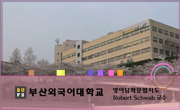This study aims to explain the advanced process of the Korean final ending '-SO(-소)', '-0(-오)', '- JI(-지)' and '-Al-EO(-아/-어)'. These morphemes were functioned two or more intention categories. The results as follows. First, I found the ...
http://chineseinput.net/에서 pinyin(병음)방식으로 중국어를 변환할 수 있습니다.
변환된 중국어를 복사하여 사용하시면 됩니다.
- 中文 을 입력하시려면 zhongwen을 입력하시고 space를누르시면됩니다.
- 北京 을 입력하시려면 beijing을 입력하시고 space를 누르시면 됩니다.

국어의 범용 어미 발달에 관한 연구 = A Study on the Development of the Two or More Functional Finial Endings during the Last Part of the 19th Century
한글로보기https://www.riss.kr/link?id=A60055656
- 저자
- 발행기관
- 학술지명
- 권호사항
-
발행연도
2012
-
작성언어
-
- 주제어
-
KDC
810
-
등재정보
KCI등재
-
자료형태
학술저널
- 발행기관 URL
-
수록면
5-28(24쪽)
-
KCI 피인용횟수
2
- 제공처
-
0
상세조회 -
0
다운로드
부가정보
다국어 초록 (Multilingual Abstract)
First, I found the two or more functioned intentional final endings from the Underwood's 1893. But these morphemes was studied by Kwon Jae-il(2005).
Second, the morpheme '-SO' was used to declarative and imperative categories. And the morpheme' -0' was used to declarative, imperative and interrogative intentions. The morpheme of '- JI' was used to declarative and interrogative categories, and '-A/-EO' was declarative and imperative intentions.
Third, I guessed the formation of these grammatical function was related in the pre-final ending‘-sʌp(<span style="font-family:'새굴림';"></span>)-/-ʌp(<span style="font-family:'새굴림';"></span>)-’. These morphemes functioned the respected to objects. But these morphemes weakened in the 19th century. So the '-SO', '-ʌp-SO' and '-0' were neutralized the same degree.
Fourth, '- JI' was formed by the grammaticalization of the bound noun 'dʌ (<span style="font-family:'새굴림';"></span>)'. The morpheme '-JIO' was '-JI-IO', but the postposifonal word 'YO(요)' formed in this time. As a results, the omitted form '- JI' was functioned two or more intentional categories.
Fifth, I guessed the formed of '- AI-EO' was similar to other morphemes's functional change.
This study aims to explain the advanced process of the Korean final ending '-SO(-소)', '-0(-오)', '- JI(-지)' and '-Al-EO(-아/-어)'. These morphemes were functioned two or more intention categories. The results as follows.
First, I found the two or more functioned intentional final endings from the Underwood's 1893. But these morphemes was studied by Kwon Jae-il(2005).
Second, the morpheme '-SO' was used to declarative and imperative categories. And the morpheme' -0' was used to declarative, imperative and interrogative intentions. The morpheme of '- JI' was used to declarative and interrogative categories, and '-A/-EO' was declarative and imperative intentions.
Third, I guessed the formation of these grammatical function was related in the pre-final ending‘-sʌp(<span style="font-family:'새굴림';"></span>)-/-ʌp(<span style="font-family:'새굴림';"></span>)-’. These morphemes functioned the respected to objects. But these morphemes weakened in the 19th century. So the '-SO', '-ʌp-SO' and '-0' were neutralized the same degree.
Fourth, '- JI' was formed by the grammaticalization of the bound noun 'dʌ (<span style="font-family:'새굴림';"></span>)'. The morpheme '-JIO' was '-JI-IO', but the postposifonal word 'YO(요)' formed in this time. As a results, the omitted form '- JI' was functioned two or more intentional categories.
Fifth, I guessed the formed of '- AI-EO' was similar to other morphemes's functional change.
목차 (Table of Contents)
- 1. 서론
- 2. 19세기 말의 범용 어미
- 3. 범용 어미의 발달 요인
- 4. 결론
- <참고문헌>
- 1. 서론
- 2. 19세기 말의 범용 어미
- 3. 범용 어미의 발달 요인
- 4. 결론
- <참고문헌>
- [Abstract]
참고문헌 (Reference)
1 정인승, "표준 우리말본" 을유문화사 1949
2 염광호, "종결어미의 통시적 연구" 박이정 1998
3 정재영, "의존 명사 ‘다’의 문법화" 태학사 1996
4 최현배, "우리말본" 연희전문학교 출판부, 탑출판사 1937
5 허웅, "우리 옛말본-형태론-" 샘문화사 1983
6 허재영, "높임의 조사 ‘요’의 문법화 - 생성과 변화 과정을 중심으로-" 한말연구학회 (23) : 473-493, 2008
7 김성란, "근대 국어의 종결 어미 연구-노걸대류 언해본을 중심으로" 역락 2006
8 고경태, "근대 국어의 어말 어미, In 근대국어 문법의 이해" 박이정 177-213, 1998
9 주시경, "국어문법" 탑출판사 1910
10 편무진, "교린수지:해제·본문·색인(한일어)" 홍문각 2000
1 정인승, "표준 우리말본" 을유문화사 1949
2 염광호, "종결어미의 통시적 연구" 박이정 1998
3 정재영, "의존 명사 ‘다’의 문법화" 태학사 1996
4 최현배, "우리말본" 연희전문학교 출판부, 탑출판사 1937
5 허웅, "우리 옛말본-형태론-" 샘문화사 1983
6 허재영, "높임의 조사 ‘요’의 문법화 - 생성과 변화 과정을 중심으로-" 한말연구학회 (23) : 473-493, 2008
7 김성란, "근대 국어의 종결 어미 연구-노걸대류 언해본을 중심으로" 역락 2006
8 고경태, "근대 국어의 어말 어미, In 근대국어 문법의 이해" 박이정 177-213, 1998
9 주시경, "국어문법" 탑출판사 1910
10 편무진, "교린수지:해제·본문·색인(한일어)" 홍문각 2000
11 高橋亨, "韓語文典" 탑출판사 1977
12 鄭國采, "現行朝鮮語法" 탑출판사 1977
13 朝鮮總督府, "朝鮮語文法及會話書" 탑출판사 1977
14 藥師寺知曨, "文法註解韓語硏究法" 탑출판사 1977
15 J.S.Gale, "Korean Grammatical Forms(사과지남)" 탑출판사 1977
16 H.G. Underwood, "An Introduction to the Korean Spoken Language(韓英文法)" 탑출판사 1977
17 J.Scott, "A Corean Manual or Phrase Book(언문말책)" 탑출판사 1977
18 권재일, "20세기 초기 국어의 문법" 서울대학교출판부 2005
동일학술지(권/호) 다른 논문
-
- 한국언어문학회
- 신희교(Sin,Hui-gyo)
- 2012
- KCI등재
-
- 한국언어문학회
- 민영대(Min, Young-da)
- 2012
- KCI등재
-
- 한국언어문학회
- 김수중(Kim, Su-jung)
- 2012
- KCI등재
-
- 한국언어문학회
- 최은영(Choi, Eun-young)
- 2012
- KCI등재
분석정보
인용정보 인용지수 설명보기
학술지 이력
| 연월일 | 이력구분 | 이력상세 | 등재구분 |
|---|---|---|---|
| 2028 | 평가예정 | 재인증평가 신청대상 (재인증) | |
| 2022-01-01 | 평가 | 등재학술지 유지 (재인증) |  |
| 2019-01-01 | 평가 | 등재학술지 유지 (계속평가) |  |
| 2016-01-01 | 평가 | 등재학술지 선정 (계속평가) |  |
| 2015-12-01 | 평가 | 등재후보로 하락 (기타) |  |
| 2011-01-01 | 평가 | 등재학술지 유지 (등재유지) |  |
| 2009-01-01 | 평가 | 등재학술지 유지 (등재유지) |  |
| 2007-01-01 | 평가 | 등재학술지 유지 (등재유지) |  |
| 2005-01-01 | 평가 | 등재학술지 유지 (등재유지) |  |
| 2002-01-01 | 평가 | 등재학술지 선정 (등재후보2차) |  |
| 1999-07-01 | 평가 | 등재후보학술지 선정 (신규평가) |  |
학술지 인용정보
| 기준연도 | WOS-KCI 통합IF(2년) | KCIF(2년) | KCIF(3년) |
|---|---|---|---|
| 2016 | 0.31 | 0.31 | 0.28 |
| KCIF(4년) | KCIF(5년) | 중심성지수(3년) | 즉시성지수 |
| 0.3 | 0.32 | 0.556 | 0.11 |




 스콜라
스콜라




